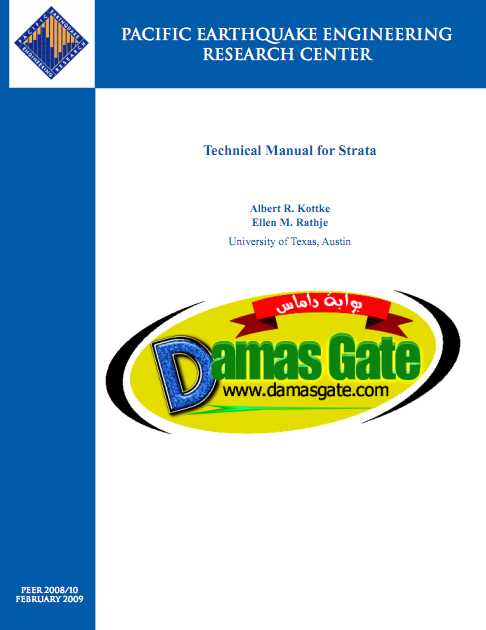Technical Manual for Strata

Technical Manual for Strata
Albert R. Kottke Department of Civil, Architectural, and Environmental Engineering
University of Texas, Austin
Ellen M. Rathje Department of Civil, Architectural, and Environmental Engineering
University of Texas, Austin
PEER Report 2008/10 Pacific Earthquake Engineering Research Center
College of Engineering University of California, Berkeley
February 2009
ABSTRACT
The computer program Strata performs equivalent-linear site response analysis in the frequency domain using time domain input motions or random vibration theory (RVT) methods, and allows for randomization of the site properties. The following document explains the technical details of the program, and provides a user's guide.
Strata is distributed under the GNU General Public License, which can be found at .
1 Introduction
The computer program Strata performs equivalent-linear site response analysis in the frequency domain using time domain input motions or random vibration theory (RVT) methods, and allows for randomization of the site properties. Strata was developed with financial support provided by the Lifelines Program of the Pacific Earthquake Engineering Research (PEER) Center under grant SA5405-15811 and funding from the Nuclear Regulatory Commission. Strata is distributed under the GNU General Public License which can be found at .
The following document explains the technical details of the program. Chapter 2 provides an introduction to equivalent-linear elastic wave propagation using both time series and random vibration theory methods. Using the time series method, a single motion is propagated through the site to compute the strain-compatible ground motion at the surface of the site or at any depth in the soil column. Using random vibration theory, the expected maximum response is computed from a mean Fourier amplitude spectrum (amplitude only), and duration. Chapter 3 introduces random variables and the models that Strata uses to govern the variability of the site properties (nonlinear properties, layering thickness, shear-wave velocity, and depth to bedrock). Chapter 4 introduces Strata's graphical user interface, along with several tutorials that introduce the program's features.
Download
*